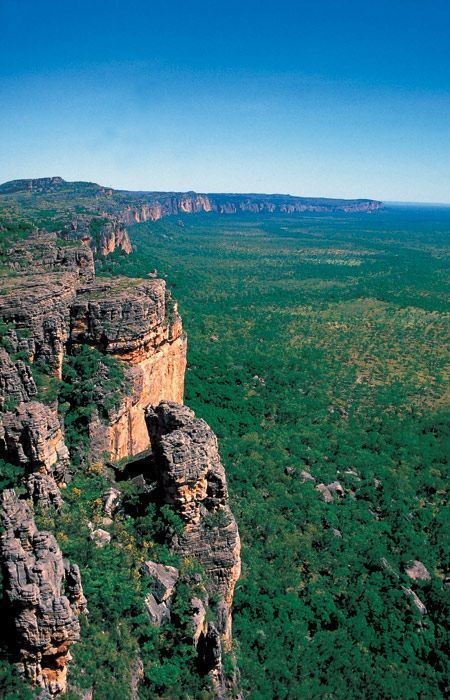
Discover Kakadu Bird Week: Jabiru’s Avian Adventure in the Northern Territory
Immerse yourself in Kakadu Bird Week, a vibrant celebration of birdlife and wilderness located near Jabiru, NT. Experience guided walks, expert insights, and the dynamic presence of Kakadu’s feathered residents in a setting that challenges and delights all adventurers.
Carry Adequate Water
Kakadu’s dry heat and active mornings demand you stay hydrated with at least two liters of water for day hikes.
Wear Sturdy, Breathable Footwear
Expect uneven, sometimes muddy trails near wetlands—good shoes prevent injury and keep you comfortable throughout the day.
Plan for Early Morning Starts
Bird activity peaks at dawn; starting early lets you witness more wildlife and avoid midday heat.
Use Sun Protection and Insect Repellent
Sunscreen, hats, and repellents guard you against harsh sun and biting insects common near water during Kakadu Bird Week.
Discover Kakadu Bird Week: Jabiru’s Avian Adventure in the Northern Territory
Kakadu Bird Week in Jabiru, Northern Territory, invites adventurers and bird lovers alike to engage with one of Australia’s richest wildlife experiences. Set against the backdrop of Kakadu National Park’s vast wilderness, this week-long festival offers guided walks, birdwatching tours, and expert talks — all designed to reveal the dynamic wings-and-song that fills the region.
Jabiru acts as your practical gateway, a small town perched near the park’s heart, where accessibility and amenities ease your entry into this striking environment. The terrain is varied but manageable; expect forested trails where gums and paperbarks sway in the warm breeze, wetlands that call to waterbirds, and rocky escarpments etched with ancient art. Walks vary from 3 to 7 kilometers, generally flat with slight elevation near lookout points offering panoramic views of billabongs daring you to pause and reflect.
Set your schedule for early mornings — the best bird activity happens while the sun tests the horizon, lighting the landscape and water with soft amber. Hydration is key; carrying at least two liters of water is recommended to stay alert and comfortable. Your footwear should be sturdy yet breathable, ready for occasional mud near water’s edge. Light layers are smart, keeping you shielded from sudden weather shifts and biting insects.
Kakadu Bird Week goes beyond casual sightings. Expect to meet local guides whose knowledge runs deep, connecting stories of migratory magic and native species persistence. Whether you're identifying the vibrant red-collared lorikeets or spotting the elusive black-necked stork standing sentinel by the floodplains, the week offers a practical blend of education and exploration.
Prepare for the wildness—this environment is fiercely itself, a force that commands respect. Sudden weather changes can turn trails slippery, and the sun intensifies quickly under open skies. Carry sun protection and a map or GPS for self-guided walks. Swamps and rivers invite curiosity but demand caution; currents can pick up without warning.
As the week progresses, workshops on bird photography sharpen your eye for capturing fleeting moments — the quick dart of a kingfisher or the slow, almost silent flight of a brolga. Sunset vantage points near Ubirr and Nawurlandja offer strategic spots for catching colors that highlight Kakadu’s rugged character.
Whether you’re a seasoned birder or a casual adventurer, Kakadu Bird Week balances the thrill of discovery with practical preparation, turning each step into a meaningful conversation between you and the wild.
Nearby Trips
All Adventures
Boat Charters
Water Activities
Adventures near Jabiru, NT
Discover the unique and memorable adventures that make Jabiru, NT special.
Frequently Asked Questions
What types of birds are commonly seen during Kakadu Bird Week?
Expect over 280 bird species including iconic water birds like magpie geese, jabirus, black-necked storks, and various parrots and cockatoos. Migratory species also appear seasonally, offering rich variety.
Are the birdwatching walks suitable for beginners?
Yes. Walks range in difficulty; many guided tours cater to casual birders, providing binoculars and identification tips while keeping the pace accessible.
What precautions should I take against wildlife?
Maintain a respectful distance from all animals, avoid feeding wildlife, and be cautious of water bodies due to crocodile presence. Always stick to marked paths.
How do weather conditions affect the experience?
Weather influences bird activity and trail safety – early mornings are cooler and optimal, while sudden rains can make terrain slippery and swampy. Prepare for shade and hydration accordingly.
Is camping allowed in Kakadu National Park during Bird Week?
Yes, but only in designated campgrounds such as in Jabiru or nearby sites. Book early as spots fill quickly during festival periods.
What else can I explore around Jabiru during the event?
Nearby Ubirr rock art sites, Yellow Water Billabong cruises, and Nourlangie Rock provide cultural richness and additional hiking opportunities.
Recommended Gear
Hydration Pack or Water Bottles
Maintain hydration during dry heat and long walks.
Lightweight Hiking Boots
Supports stability across uneven and sometimes wet terrain.
Sun Protection Kit (Hat, Sunscreen, Sunglasses)
Protects skin and eyes from Kakadu’s intense sun.
Insect Repellent
Prevents bites in marshy or forested areas.
Local Insights
Hidden Gems
- "Maguk Waterfall walk – lesser-visited trail with diverse birdlife and swimming holes."
- "Guluyambi Cultural Cruise – combines Indigenous history with wildlife viewing."
Wildlife
- "Brolgas: large and elegant cranes performing courtship dances near wetlands."
- "Great bowerbirds: fascinating for their elaborate nest decorations visible along forest edges."
History
"Kakadu is home to the Bininj/Mungguy people, whose ancestral knowledge shapes the park’s management and enriches the birdwatching experience with cultural stories."
